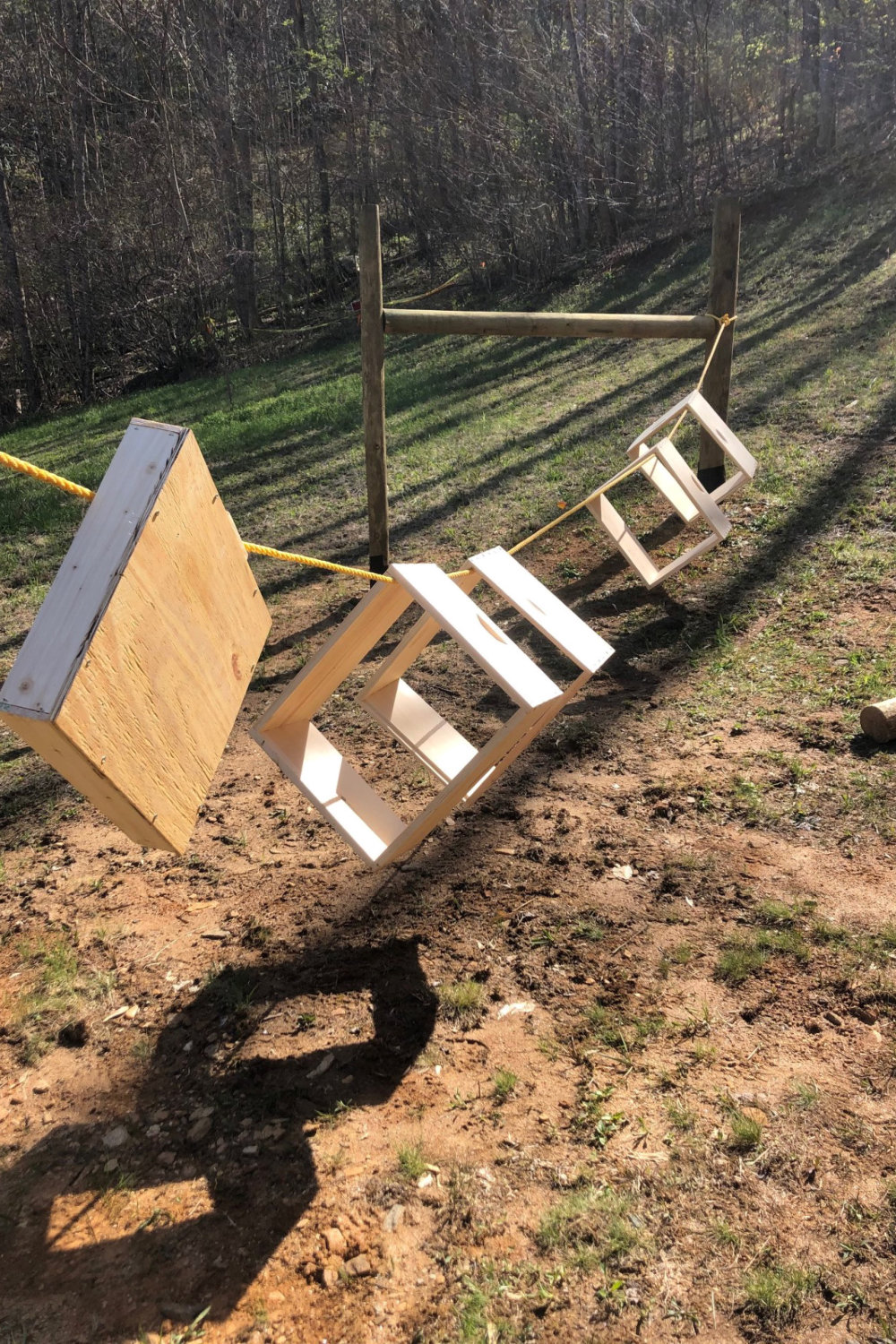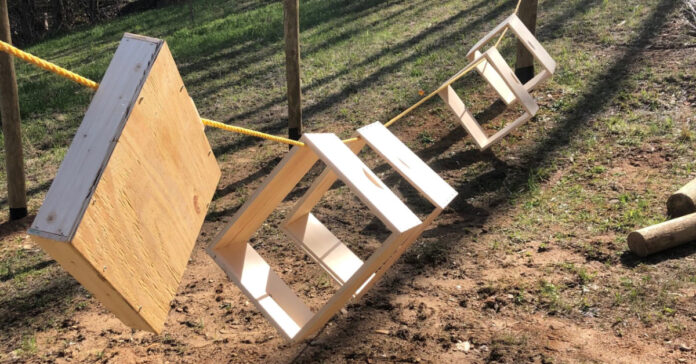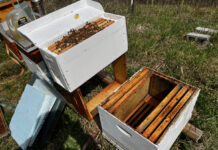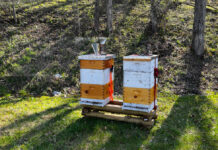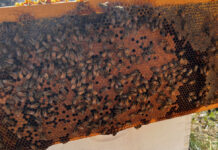Over the weekend, I assembled four deep hive boxes and 30 frames. I also built a spacer with a hive entrance, a bottom board, and a custom lid for a swarm trap. I worked inside as the cold weather dominated our area. Things are warming up and I will revert to working on the chicken coop again. My goal is to have the roof on by the end of the week.
I am having fun building the bee equipment, which surprised me. Of course, when I’m on my one thousandth frame some years from now, I might not feel that way, but I am enjoying it now. There’s something satisfying about working in the shop building something with power tools. I can see why so many retired men become woodworkers, and I think it is at least in part because they finally have time to do the job right.
Can you believe each frame required eight staples and two tiny nails? I was happy to have my pneumatic brad nailer and stapler, which I reviewed just a couple days ago. I even bought a second air hose so I could run both at the same time.
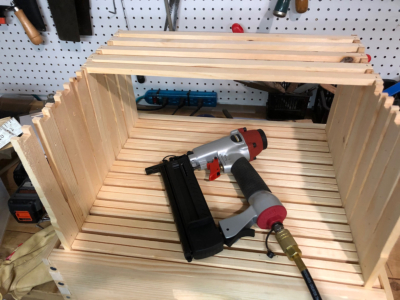
To paint the components, I strung a rope between two fence posts and suspended the hive bodies over the rope. (See main photo.) I primed these yesterday and they are ready for their final coat. Once I paint two sides, I rotate them on the rope and paint the other side. I set the bottom boards and other items on the grass to paint them. My bee yard now has white rectangular outlines on it.
Record Keeping
I am a strong believe in keeping records and using them to refine and improve my processes. Consequently, I date every frame I make and date and number every other piece of larger equipment I own with a black sharpie. I also added my name in case equipment is stolen. (Professional bee keepers brand the exterior of their boxes with a hot iron, but that’s too advanced for me.)
Each piece of equipment gets entered into an excel spreadsheet with the date built and put into the field. Maybe one day I will find a nice free or inexpensive database to do this for me and I can apply barcodes to my equipment, but until then, I’m going to use flat files in Excel. Thankfully, I became an Excel expert years ago so setting it up its second nature to me.
Why keep these records? So in five or ten years I can look back and say equipment from this vendor outlasted equipment from that vendor, or this kind of paint prevented rot better than this other paint. I can keep an inventory of my equipment and know pretty much where each piece is at any time. Inventory management may not be important now, but it could be as my hives grow or if I develop additional bee yards. It could also be useful if I have to make an insurance claim.
Tracking Hives
I also plan to keep careful notes on each hive, when it was established, the source of the bees (for example, did I split them from my hive, were they purchased, or did I capture a wild swarm), regular mite counts from alcohol washes, when they are treated for mites and with what, and when hive bodies or supers were added or subtracted.
This probably isn’t that important with just two hives, but when I get eight or ten, have written records will help keep tings straight.
Should I ever sell bees or honey, having accurate records of what I spend will make the accountant happy and frustrate the IRS. That alone is a good reason to keep detailed records!
Prepper News Update
Here’s a great article right in line with why I think more of us should “go Galt.” The article’s last paragraph outlines the path to success: “Earn as little money as possible and invest your surplus labor in assets that can’t be expropriated.” As I have said before, it’s hard for the tax man to tax my chickens or my beehives, and no government is likely to make a special assessment on the cords of firewood neatly stacked outside my house. To me, firewood is like money in the bank. To someone in Washington, it’s a worthless.
Food inflation warning signs are flashing as prices on key commodities soar. We warned you.
China very clear about its desire to “reunify” with Taiwan, meaning military conflict is possible.
One day after I wrote about vaccine resentment and jealousy, the U.S. says it might “share” 60 million AstraZeneca doses with the world.
